Active Voice and Passive Voice Teaching Resources
If you're on the hunt for active voice and passive voice worksheets for your classroom or activities to make this area of the English Language Arts curriculum easier to teach — and easier for your students to understand — take a beat. Our teacher team has put their heads together to develop curriculum-aligned resources that will have your students dropping the complicated sentence structure of passive voice for clear writing that features the active version.
What Is Active Voice And What Is Passive Voice?
If you're new to teaching this part of the English Language Arts curriculum or it's been a few years, consider this a quick refresher before you dive into lesson planning!
When something is written (or spoken) using active voice, the subject of the sentence is performing the action. For example, "The boy rode the bike." is a sentence that uses active voice
When something is written (or spoken) using passive voice, on the other hand, the verb acts upon the object of the sentence. For example, "The bike was ridden by the boy" is a sentence that uses passive voice.
Spotting passive voice is easier when students understand the forms of "to be," as most passive voice sentences will have some form of this phrase such as:
- Has been
- Have been
- Is
- Are
- Were
How to Change Passive Voice to Active Voice
Working with your students to help them get in the habit of writing in active voice? Something to remind them is that a sentence written using active voice will follow a specific structure:
- subject, verb, and object
This is significantly less confusing than a sentence written in passive voice where the sentence structure looks like this:
- Object + form of to be + past participle + by + subject
To change passive voice to active voice, students can rewrite their sentences to fit the active voice structure with the subject coming before the verb!
When Is Passive Voice OK?
It's important for students to understand the value of active voice in clear, concise writing.
But here's a tip from the ELA teachers on the Teach Starter team: Don't forget to share the times when passive voice is appropriate!
- When the subject of the sentence is unknown.
- The actor is not as important as the action itself.
- The object is the main topic of the sentence.
- Plus Plan
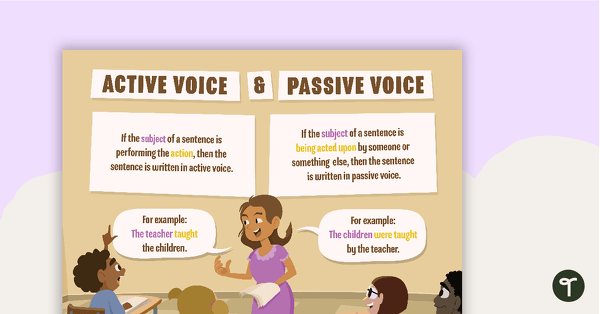
Active Voice and Passive Voice Poster
Differentiate between active and passive voice with this classroom poster.
- Plus Plan
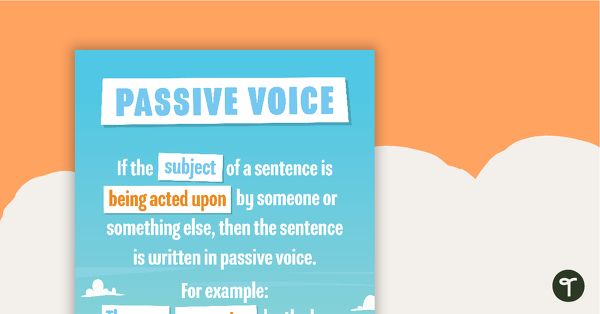
Passive Voice Poster
Identify writing in a passive voice with the aid of this classroom poster.
- Plus Plan

Active Voice Poster
Identify writing in an active voice with the aid of this classroom poster.
- Plus Plan
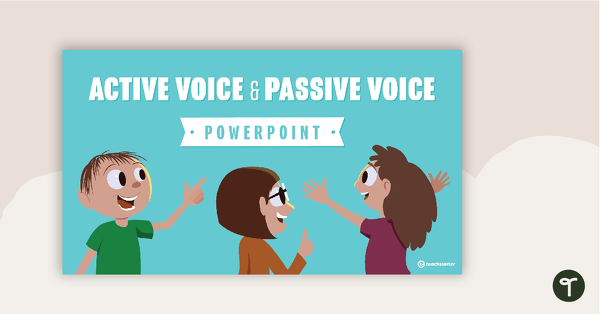
Active Voice and Passive Voice PowerPoint
A 13 slide editable PowerPoint template to use when teaching your students about active voice and passive voice.
- Plus Plan
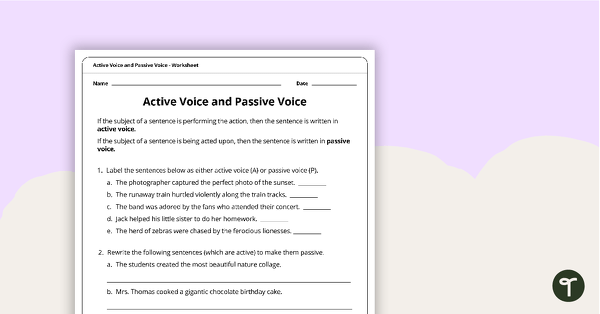
Active Voice and Passive Voice Worksheet
A worksheet for students to use when learning about active voice and passive voice.
- Plus Plan
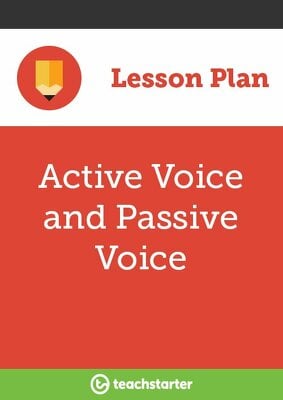
Active Voice and Passive Voice
A 60 minute lesson in which students will identify and use active voice and passive voice in sentences.